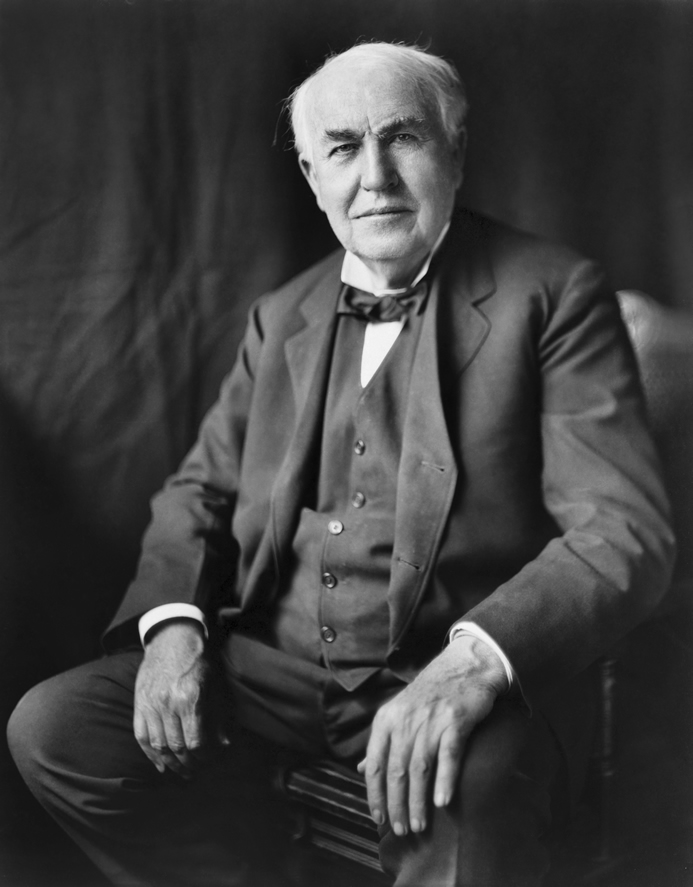 |
| Thomas Edison |
The Wizard of Menlo Park, as journalists called him in reference to his New Jersey research laboratory, Thomas Edison was the quintessential American innovator. While many inventors are a century later remembered for one principal invention (Bell's telephone, Whitney's cotton gin), Edison is responsible for or associated with the phonograph, lightbulb, the microphone used in telephones until the end of the 20th century, and direct current—along with more than 1,000 patents for lesserknown creations. Only the more fanciful Nikola Tesla, his rival in the "war of the currents," approached the breadth and variety of his work.
The seventh son of an Ohio family, Edison had less than a year of formal schooling and was largely educated by his mother, a retired schoolteacher. For the rest of his life, he praised her for encouraging him to read as a child and to experiment on what intrigued him.
For some years he worked as a telegraph operator but at the age of 30 became famous for his invention of the phonograph, a device that recorded sound on tinfoil, later wax cylinders, then vinyl; though the sound quality was poor, the mere fact of its existence in 1877 was held as a marvel and captured the public attention, helping to create the fascination the public would have with inventors and cutting-edge technology.
  |
More inventions followed, as well as refinements of earlier work; his incandescent lightbulb was not the first of its kind but was the first to be a success, efficient and bright enough to be used on a wide scale. His Edison Electric Light Company provided not only electric lamps but the power needed to use them.
Though Nikola Tesla had also developed a lightbulb, it was the "war of the currents" that made rivals of Edison and Tesla. While Edison had developed direct current (DC) for power distribution, Tesla developed alternating current (AC), which could be carried by cheaper wires at higher voltages.
Edison's famous tactic was to promote AC power for the use of the electric chair in order to demonstrate the dangers of the method; his employees publicly electrocuted animals as a scare tactic. The effort was in vain. AC slowly replaced DC as the power distribution method of choice and remains so today.
By the time of Edison's death in 1931, his inventions had helped lead to a world lit by incandescent lights and powered by electricity; entertained by radio plays, records, and motion pictures; connected by telephone and telegraph; and home to such works as James Joyce's Finnegan's Wake and Marcel Duchamp's "Nude Descending a Staircase," both of them inspired by and possible only in the Edisonian world.